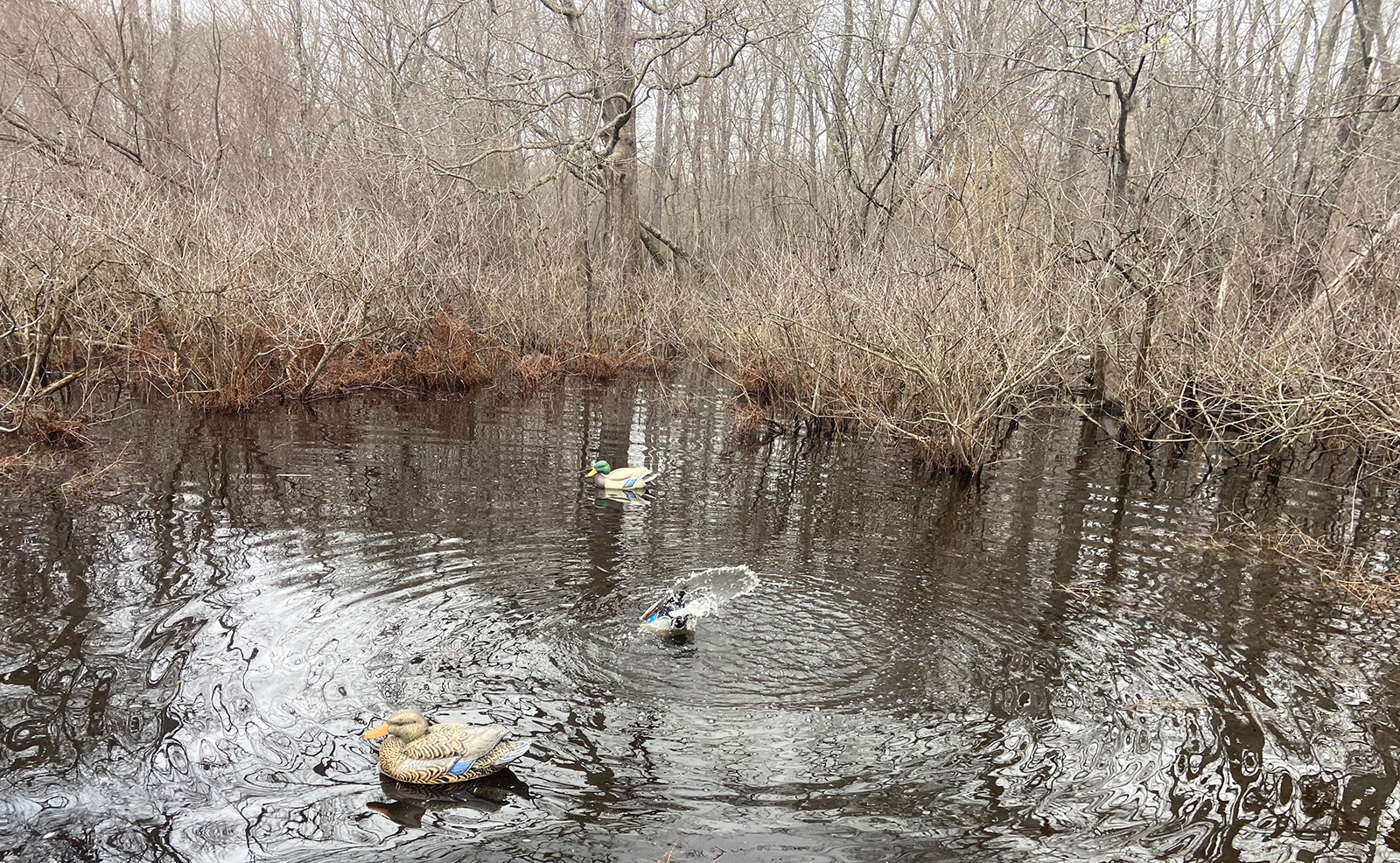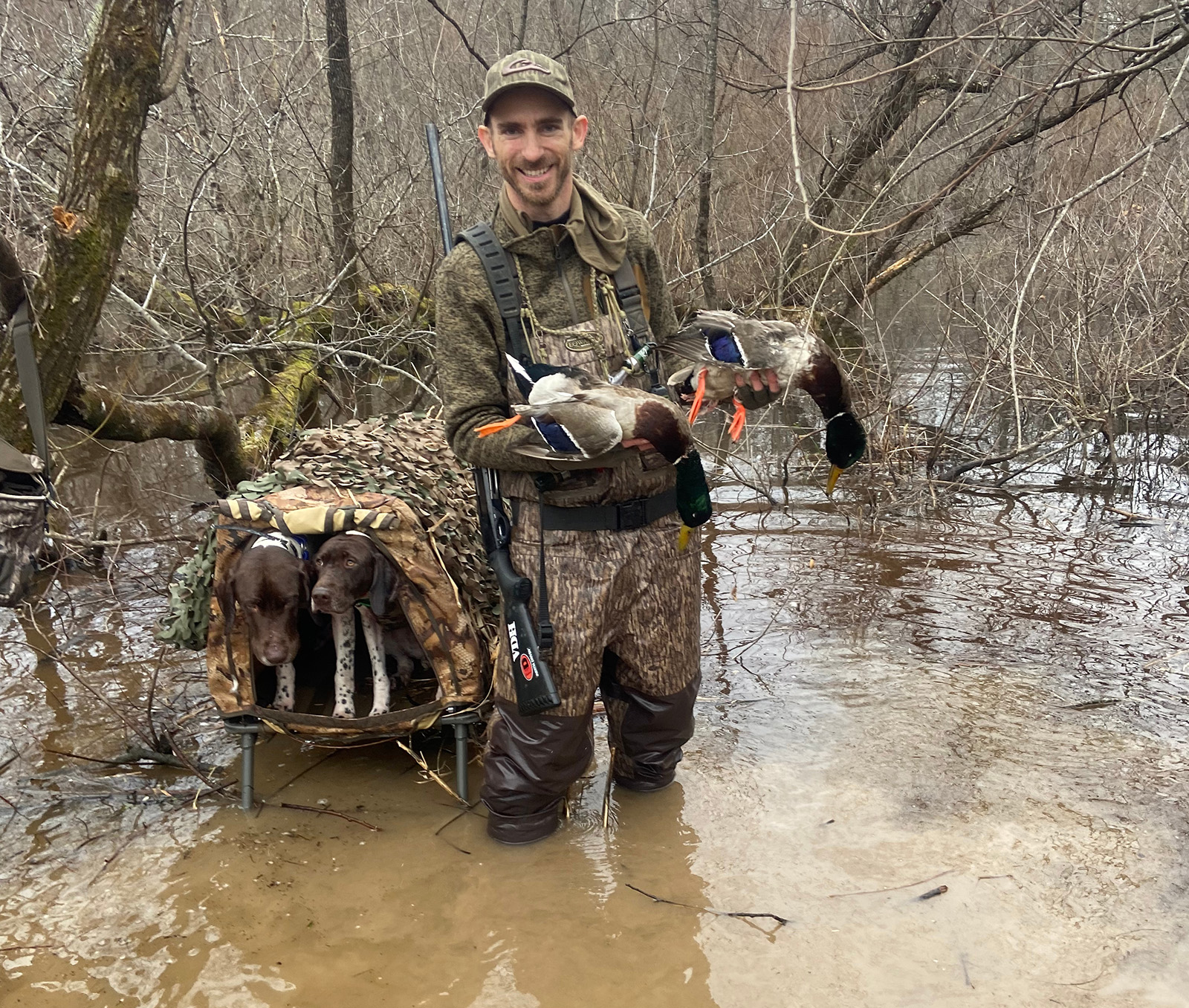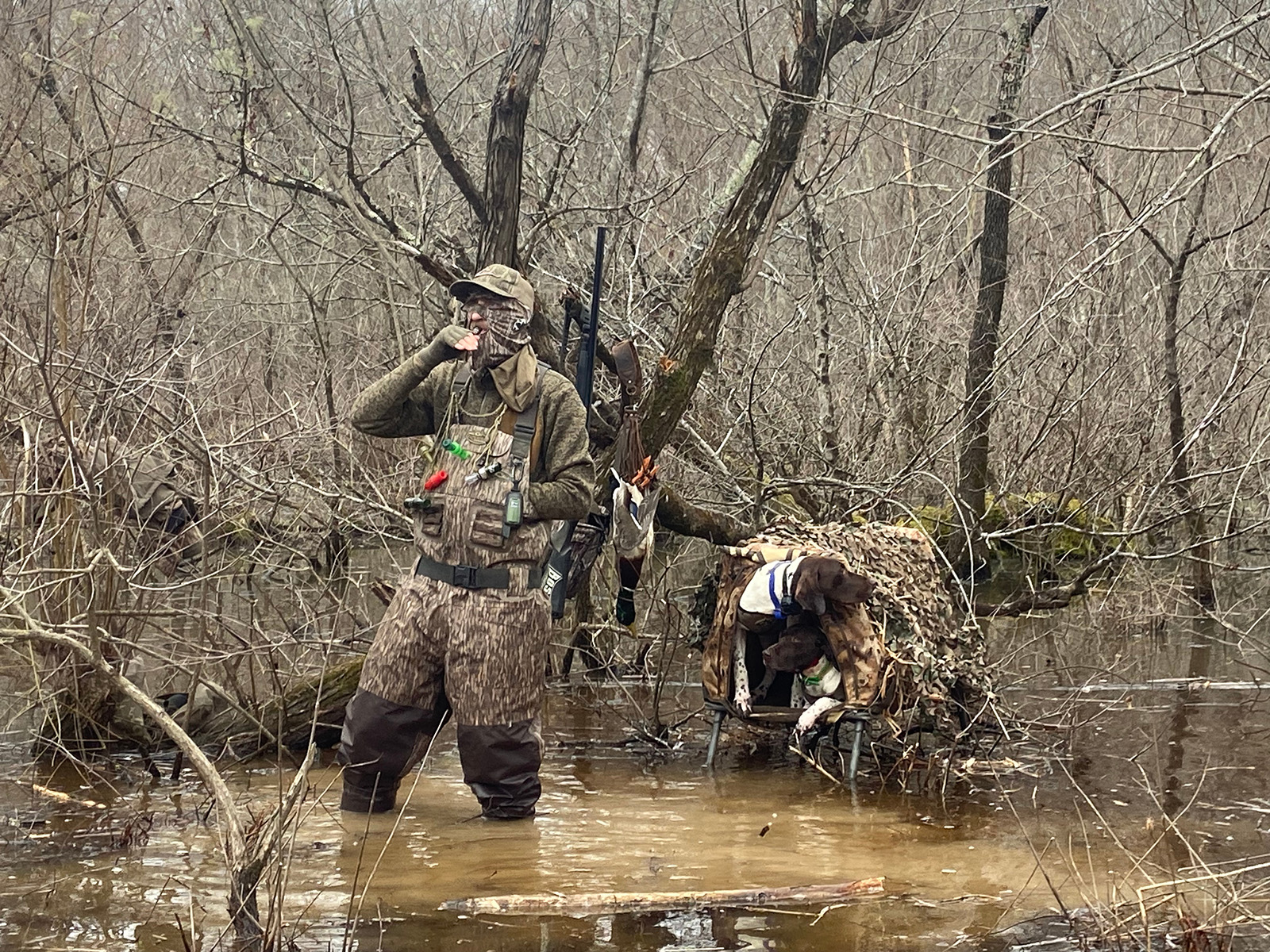By Josiah Donaldson
Photos by Josiah Donaldson
When the deer meat is already in the freezer and most folks think about firing up the snow blower, the duck action is just heating up in Virginia!
Ducks are migratory birds. One duck may start their journey in Quebec and make their way to Virginia or even further south as the weather gets harsher. By the end of duck season in January, many ducks have migrated through the state. Here are some ways to capitalize on finding and hunting ducks in the timber holes, sloughs, and marshes.
- Find where the ducks want to be. Duck hunters call this the “X.” Just setting up in a slough or marsh may give you a good view to the show of ducks flying, but it’s not a consistent recipe for success. Puddle ducks like mallards generally just want to be where other mallards are. Look for where the ducks are going, where they are calling from, and even clues like feathers on the water. If they come over the trees with their feet already down, you know you’ve found where they want to be. But remember, if the ducks are there today, they might not be there tomorrow!
- Less is More. Once you have found the “X,” it’s easy to want to throw out decoys into every open spot in the hole, put out three spinning wing decoys and call at every flock that passes by. Don’t do this! During the third split of duck season (Dec. 19 – Dec. 31 this year) some hunters refuse to use “spinners” because of how wary the ducks are by this time. If you are already where the ducks want to be, decoys really shouldn’t be necessary, but it helps keep their focus off of you. Consider taking a simple “jerk rig” or maybe six or less decoys. Any motion duck decoy that helps keep sheet ice from forming will also be your friend. And trust me, the paddle or hike into a back timber hole will be much easier with less gear! If the ducks are circling but not coming in, consider removing a few decoys or moving them to the outsides of the hole. Ducks won’t want to land in a backwater space already packed full of decoys.

A motion decoy that disturbs the water gives ripples that can be seen from the air.
- Picking your shots. Often you will see wary puddlers such as mallards, black ducks, wood ducks, and occasional divers such as mergansers and ringnecks in these backwater spots. If they don’t come right in, they may circle a few times. If they are circling lower, that’s a good sign. Call a few times “at their butts” when they are flying away. Call the shot when they are close enough, feet down or not. Remember, there is no guarantee they’ll come in for “one last pass”! If ducks are dropping in vertically through timber, it may be necessary to shoot slightly under them. Also keep a close eye on any ducks when they hit the water. If their head is up, shoot them again immediately. It is extremely common to lose crippled ducks in timber holes (with or without a dog) as they have an uncanny ability to hit the water and disappear, never to be seen again.

Andy Gibson with a limit of Virginia mallards and his dogs Split and Lexi.
- Peek-a-Boo. While the early season may offer plenty of concealment in the form of foliage, winter ducks will spot you in a heartbeat. Typical duck hunter’s camouflage for a reedy environment may be too light colored, so wear timber or other darker patterns. Take advantage of shadows and overhead cover. Gloves and a facemask are necessary here as well. A lightweight camo netting can be stuffed into your bag and used to cover your dog hide, boat, and more. Last tip: try not to look up at the ducks when they are circling overhead but use your peripheral vision. It doesn’t matter how well you hide if they catch you moving!

Darker shades of camo, gloves, and a facemask are a must.
- Watch yourself! Safety cannot be understated in these backwater sloughs. Besides wearing a life jacket in the boat, wading safety is a must. Wear a wader belt and beware of unseen “beaver runs” and channels that can make you take a swim. A well-trained dog can help you retrieve ducks in water that would be risky for humans, but make sure you take care of your canine friends by getting them out of the water when not making retrieves. Firearm safety should always be a given and remember to always know where your partners (human and canine) are.



